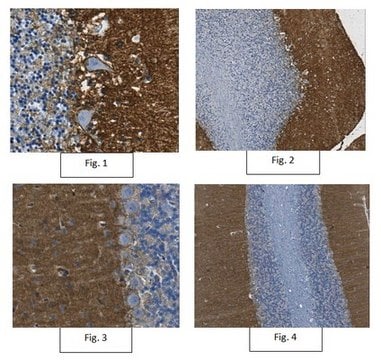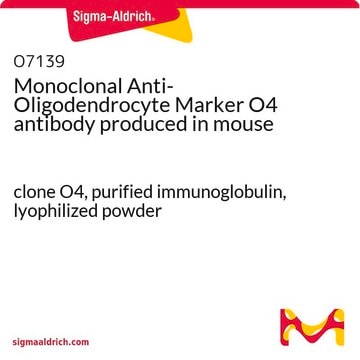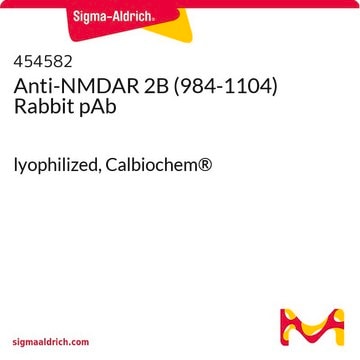MAB2262
Anti-Excitatory amino acid transporter 2 Antibody, clone G6
clone G6, from mouse
別名:
Glutamate/aspartate transporter II, Sodium-dependent glutamate/aspartate transporter 2, Solute carrier family 1 member 2, excitatory amino acid transporter 2, excitotoxic amino acid transporter 2, glial high affinity glutamate transporter, solute carrier
About This Item
おすすめの製品
由来生物
mouse
品質水準
抗体製品の状態
purified immunoglobulin
抗体製品タイプ
primary antibodies
クローン
G6, monoclonal
化学種の反応性
mouse, human
化学種の反応性(ホモロジーによる予測)
rat (100% immunogen homology)
テクニック
immunocytochemistry: suitable
immunohistochemistry: suitable
western blot: suitable
アイソタイプ
IgG1κ
NCBIアクセッション番号
UniProtアクセッション番号
輸送温度
wet ice
ターゲットの翻訳後修飾
unmodified
遺伝子情報
human ... SLC1A2(6506)
詳細
特異性
免疫原
アプリケーション
ニューロサイエンス
神経シグナリング
品質
Western Blot Analysis: 0.5 µg/ml of this antibody detected Excitatory amino acid transporter 2 on 10 µg of mouse brain tissue lysate.
ターゲットの説明
物理的形状
保管および安定性
アナリシスノート
Mouse brain tissue lysate
免責事項
Not finding the right product?
Try our 製品選択ツール.
保管分類コード
12 - Non Combustible Liquids
WGK
WGK 1
引火点(°F)
Not applicable
引火点(℃)
Not applicable
適用法令
試験研究用途を考慮した関連法令を主に挙げております。化学物質以外については、一部の情報のみ提供しています。 製品を安全かつ合法的に使用することは、使用者の義務です。最新情報により修正される場合があります。WEBの反映には時間を要することがあるため、適宜SDSをご参照ください。
Jan Code
MAB2262:
試験成績書(COA)
製品のロット番号・バッチ番号を入力して、試験成績書(COA) を検索できます。ロット番号・バッチ番号は、製品ラベルに「Lot」または「Batch」に続いて記載されています。
ライフサイエンス、有機合成、材料科学、クロマトグラフィー、分析など、あらゆる分野の研究に経験のあるメンバーがおります。.
製品に関するお問い合わせはこちら(テクニカルサービス)








